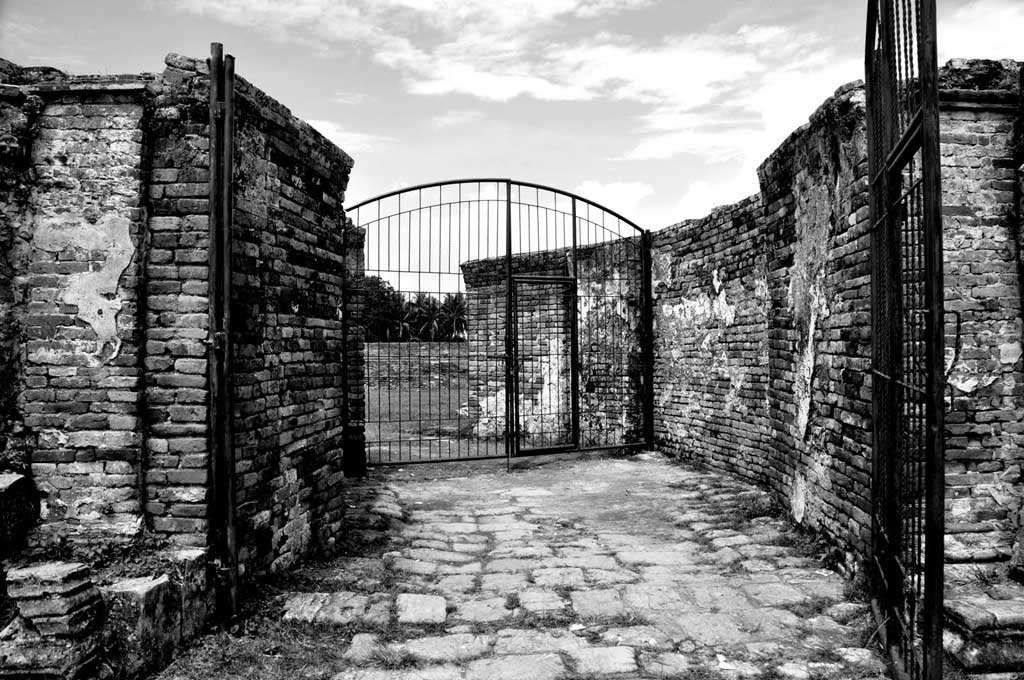Jakarta is sadly lacking in opportunities for a pleasant day trip out of the city. The traffic, not to mention the crowds, on a visit to Bandung, Bogor or Puncak are enough to put many trippers off while the attractions of factory outlets, tracking down that perfect brownies or hot springs soon fade for people who would like to see and understand a little more of the country.
Luckily for the day tripper from Jakarta, Banten Lama is a long way from being a ‘must see’ for any visitor. Most have never heard of the place and many who have driven past the clearly marked exit along the Jakarta – Merak jalan tol will have no idea what is there.
It is a popular destination with Muslim pilgrims attracted by the famous mosque, Sunday is especially busy as are religious holidays, but most days, especially early in the morning, the place remains a quiet, unassuming place.
Once upon a time Banten was a thriving port at the heart of South East Asian trade. Spices attracted traders from China, India, Persia and ultimately Europe turning the port into a 17th century Singapore.
Today, little remains of that heyday. Even the sea, which would have been full of all manner of vessels, has retreated. Instead, what is left are mere hints of the glory that was once Banten.
Heading north from the tol, the narrow road is typical Java. Potholed, too narrow for the traffic and filled with becaks and angkots while motorcyclists weave their way with impunity between the moving obstacles.
With mini marts and small shop houses supplying the construction industry there is little to suggest what Banten offers. Until you reach the Kaibon Palace. Just south of a stream, Cibanten, by a railway bridge, the Palace isn’t much to look at; just a pile of stones that provide the outline of what must have once been an impressive abode for Ratu Asiah, the mother of Sultan Syaifuddin before the Dutch leveled it in 1832.
They don’t get that many foreign visitors and as you proceed you will no doubt receive plenty of stares from curious locals.
A fee must be paid to enter the historic area proper, a man will unfurl himself lazily from his plastic chair by the side of the road, peer in your car and with a voice rasped from a thousand cigarettes, will tell you how much you owe. Don’t expect a brochure or a smile, hand over your money, he’ll take it with barely a grin before returning to his plastic chair and next fag.
The first thing you will come across is the Surosowan Palace; a once mighty affair that was razed to the ground by the Dutch who got upset with the local Sultan. Like the Kaibon, the groundworks remain, the observant can make out the stone steps that would have led down to a pool of sorts but that’s about it.
There is little in the way of shelter and as the sun rises it starts to get very hot. A few goats and chickens will be grazing in and around the Palace.
The alun alun is nearby, just after a small museum that may or may not be open. No cars are allowed close to the open area but walking is the best option anyway. Market stalls hem in the narrow lane selling all manner of Islamic souvenirs, most venerating the Wali Songo, nine saints who are said to have helped Islam settle on the island of Java.
The mosque here, Masjid Agung, is several hundred years old and widely revered among the faithful; Sundays get very busy with angkots full of the faithful arriving every few moments, filling the coffers of the local community. Typically Bantenese with its tiered roof, it is possible to climb the mosque’s minaret, a white obelisk shaped tower said to have been designed by a Chinese Muslim. Looking down on the alun alun and the Palace can afford some idea of the scale of Banten’s power though again the crude market stalls with their blue sheeting tend to blight the landscape.
The graveyard is home to the tombs of some of the Sultans who ruled a Banten that also covered part of the southern tip of Sumatra where pepper greatly contributed to their wealth.
A short distance away, past some concrete monstrosities that house swifts for the famed Bird’s Nest Soup delicacy, there are further remains of the past. Driving is possible but a short walk is a pleasant enough option though the stifling heat needs to be taken into account.
Speelwijk Fort was built by the Dutch to protect their investments in the area. Like the Kaibon and Surosowan Palaces it looks like someone has shaved the top half off the fort. The walls remain, thick and sturdy, though there is evidence of much refurbishment.
Along the eastern wall of the castle are some crumbling tombs, some that may have been quite grand back in the day, that bear testimony to hardy souls who never made it back home from the tropics.
On the other side of a small stream sits an historic Chinese klenteng which serves as a neat end to the journey. In a couple of short hours a visitor can explore a Bantenese Palace, a mosque with a tower designed by a Chinese convert, a fort built by the Dutch before, lastly the Chinese temple.
Indonesia’s rich and multi cultured past wrapped up in one small package just a 90 minute drive from Jakarta. A day out need not be just a trudge around a shopping mall!





